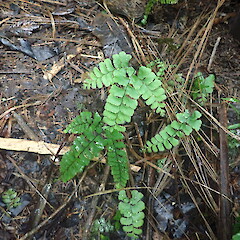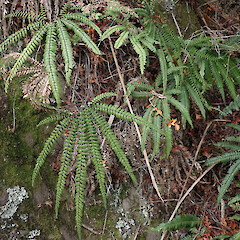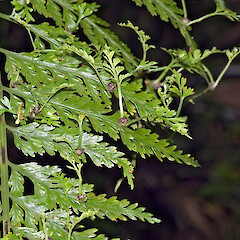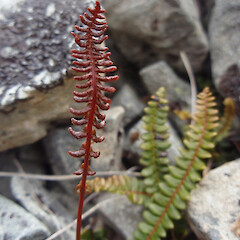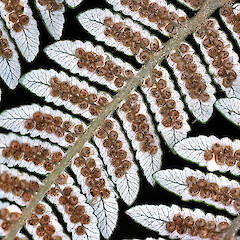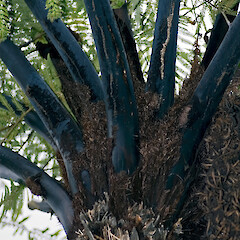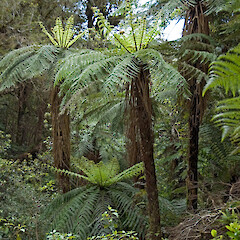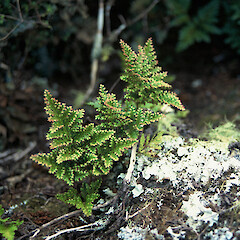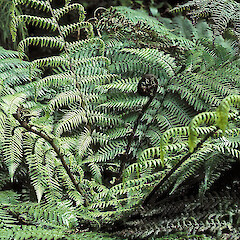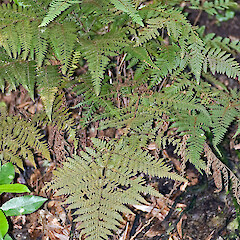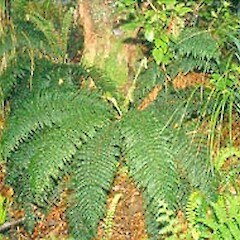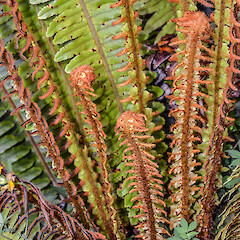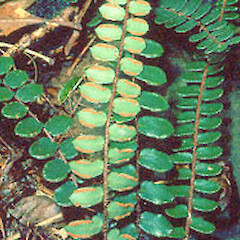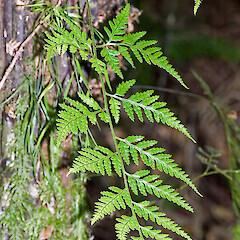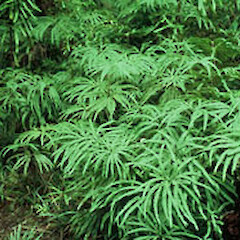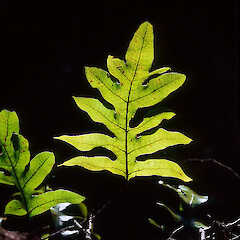The following list of ferns can be readily grown in New Zealand gardens:
Adiantum diaphanum
Common name: tuberous maidenhair, small maidenhair
Family: Pteridaceae
Status: Not Threatened
Adiantum hispidulum
Common name: rosy maidenhair
Family: Pteridaceae
Status: Not Threatened
Asplenium bulbiferum
Common name: hen and chicken fern, pikopiko, mother spleenwort
Family: Aspleniaceae
Status: Not Threatened
Asplenium flaccidum
Common name: drooping spleenwort, hanging spleenwort
Family: Aspleniaceae
Status: Not Threatened
Austroblechnum penna-marina subsp. alpina
Common name: little hard fern, alpine hard fern
Family: Blechnaceae
Status: Not Threatened
Alsophila tricolor
Common name: silver fern, ponga
Family: Cyatheaceae
Status: Not Threatened
Sphaeropteris medullaris
Common name: mamaku, black tree fern
Family: Cyatheaceae
Status: Not Threatened
Alsophila smithii
Common name: kātote, Smith’s tree fern, soft tree fern
Family: Cyatheaceae
Status: Not Threatened
Davallia tasmanii subsp. tasmanii
Common name: davallia, Three Kings davallia
Family: Davalliaceae
Status: At Risk – Naturally Uncommon
Dicksonia squarrosa
Common name: wheki, rough tree fern, harsh tree fern
Family: Dicksoniaceae
Status: Not Threatened
Doodia australis
Common name: rasp fern
Family: Blechnaceae
Status: Not Threatened
Hymenophyllum nephrophyllum
Common name: kidney fern, konehu, kopakopa, raurenga
Family: Hymenophyllaceae
Status: Not Threatened
Lastreopsis velutina
Common name: velvet fern
Family: Dryopteridaceae
Status: Not Threatened
Leptopteris superba
Common name: heruheru, crêpe fern, Prince of Wales feathers
Family: Osmundaceae
Status: Not Threatened
Lomaria discolor
Common name: crown fern, petipeti, piupiu
Family: Blechnaceae
Status: Not Threatened
Pellaea rotundifolia
Common name: round-leaved fern, New Zealand cliff brake
Family: Pteridaceae
Status: Not Threatened
Polystichum vestitum
Common name: punui, prickly shield fern
Family: Dryopteridaceae
Status: Not Threatened
Rumohra adiantiformis
Common name: leathery shield fern, florists fern
Family: Dryopteridaceae
Status: Not Threatened
Sticherus cunninghamii
Common name: umbrella fern, waekura, tapuwae kotuku
Family: Gleicheniaceae
Status: Not Threatened
Zealandia pustulata subsp. pustulata
Common name: hound’s tongue, kōwaowao, pāraharaha
Family: Polypodiaceae
Status: Not Threatened
To view other groups of garden plants follow these links:

